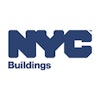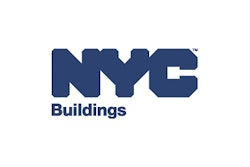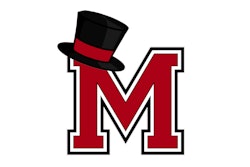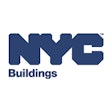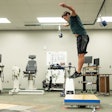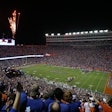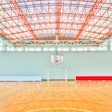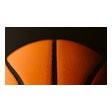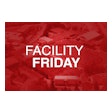![[Photo courtesy of Aacer]](https://img.athleticbusiness.com/files/base/abmedia/all/image/2021/05/ab.spotlight521_feat.png?auto=format%2Ccompress&q=70&w=400)
Among the most expansive amenities and expensive line items of nearly every indoor sports venue and recreation center, the gymnasium floor has covered a lot of ground in recent years — in terms of look, feel and performance criteria so acute they're measured in millimeters. At the center of it all is the end-user, whose safety and satisfaction has never been more paramount in the eyes of flooring manufacturers.
"The biggest thing now is people have found their niche in the resilient floors that actually protect the athlete more than they ever did," says Arizona-based independent gym floor inspector Floyd Shelton, a former manufacturer himself. "In the '50s, the floors were rock hard. Then in the '90s, that's when everyone started to make the floors more resilient, more athlete-friendly."
Today's manufacturers of both hardwood and synthetic gym flooring offer several different means to that end. The options are broad and ever expanding. Here's a list of factors that should influence any gymnasium flooring purchase.
Purpose
Any purchasing process begins with determining what types of activities and athletes the floor will accommodate. Will it be a floor dedicated to basketball? Or one expected to host volleyball, pickleball, badminton, futsal and fencing, too? Will it cater to varsity athletes in competition or strictly to recreational users? Adults or kids? Will it be asked to bear the weight of bleachers, lifts and other heavy loads? Will it host street-shoe traffic during non-sporting events?
"We find that sometimes our customers have a specific floor choice in mind, but it doesn't always match the intended use of the floor," says the president of one flooring manufacturer. "We always recommend our customers start their selection process by identifying what the floor will be used for and who will be the primary users. It is important to understand what will be happening on that floor day after day so we can recommend an optimal floor system. This will prevent premature damage, or worse, injuries to those on the floor."
![[Photo courtesy of Mondo]](https://img.athleticbusiness.com/files/base/abmedia/all/image/2021/05/ab.spotlight521a.png?auto=format%2Ccompress&fit=max&q=70&w=400) [Photo courtesy of Mondo]
[Photo courtesy of Mondo]
Budget
Hardwood is still king of the courts in gyms that primarily host basketball and volleyball, and there are numerous wood-flooring manufacturers offering a wide selection of maple grades and subfloor systems to meet performance expectations and agreeable price points. That said, a wood floor is going to require a greater investment — perhaps twice as much per square foot up front, as well as in terms of ongoing maintenance — than certain synthetic alternatives.
One of those synthetic alternatives — with its durability, low-maintenance and overall cost-effectiveness — may be a better fit if a given floor is expected to serve many purposes. Like hardwood, synthetic floors are suitable for basketball and volleyball, but they may also offer the ability to host functions — athletic and otherwise — that aren't as wood-friendly. A baseball practice brought indoors due to rain is no problem for a synthetic gym floor, for example, and some synthetic flooring variations can accommodate inline hockey.
RELATED: PRODUCT SPOTLIGHT 2021: Gymnasium Products and Indoor Surfaces
Maintenance
All types of gym floors require upkeep, and purchasers should consider their ability to commit to whatever maintenance schedule their chosen flooring medium calls for — both in terms of available financial resources and manpower. Regardless of surface type, floors should be swept or dry mopped daily, if not several times per day, to remove dirt and debris. In addition, a synthetic floor can be damp mopped daily and mechanically scrubbed weekly, though some manufacturers say semiannual or even annual scrubbing to remove scuffmarks may suffice.
Greater care must be taken regarding the vigorous cleaning of hardwood. Manufacturers are quick to point out that water is wood's worst enemy, so power scrubbers, pressure washers and even water alone should never be used to clean a hardwood floor. Spills must be addressed immediately, and scuffs should be spot-removed with a soft cloth and a cleaner approved by the floor's finish manufacturer, so as not to alter the surface's friction characteristics. Moreover, debris should be removed from the space between boards under conditions that have allowed the wood floor to contract.
Ideally, hardwood is screened, its game lines touched up and the entire surface resealed annually, with a full sanding down to bare wood — and the requisite staining, lining and finishing — every seven or eight years. One manufacturer widens the sand-and-refinish window to 12 to 15 years. In any case, given the three-quarter-inch thickness of most tongue-and-groove maple, hardwood flooring can withstand the full process a finite number of times, but lifespans of well-maintained hardwood floors can easily reach or exceed 50 years.
![[Images courtesy of Ecore]](https://img.athleticbusiness.com/files/base/abmedia/all/image/2021/05/ab.spotlight521b.png?auto=format%2Ccompress&fit=max&q=70&w=400) [Images courtesy of Ecore]
[Images courtesy of Ecore]
Performance
Sport floors are tested to many different performance metrics — including ball bounce, deformation under the weight of an athlete and its resulting deflection impact on surrounding athletes, coefficient of surface friction and the floor's rolling-load-bearing capabilities.
While the hardwood court's characteristics haven't changed much at the surface in more than a century, subflooring systems have advanced tremendously over the past 30 years in terms of impact on the overall flooring system's performance — with many incorporating anchors, sleepers and pads in combination to address concerns including dimensional stability, shock absorption, vibration control and sound dampening. The result should be a surface that reacts consistently across the entire span of the floor, and in tune with the desires of its end-users. "Pro athletes want a very, very hard floor," says Shelton, who does repair work for the NBA's Phoenix Suns. "They want to know when they push that ball down, it's going to come right back in their hand."
In addition to impacting the overall system's resiliency, subflooring should allow for air movement beneath the court surface in the interest of moisture control.
Synthetic courts, including multilayered systems, can likewise be tweaked in terms of composition, thickness and subfloor components to meet performance standards and client specifications.
RELATED: Find more solutions for your facility in the Buyers Guide
Context
The environment in which a wood floor exists greatly impacts its performance characteristics and overall longevity. A gym's atmospheric conditions — which can be influenced by factors both internal (proximity to a natatorium or below-grade location, as examples) and external (regional climate) — must be controlled by an HVAC system at all times of day and throughout the entire year, with relative humidity consistently maintained within a range of 35 to 50 percent. Says one manufacturer's spokesperson, "If the environment is not kept in check, it can have long-term, detrimental effects on your floor and, in some cases, void your warranty."
Another contextual consideration may involve an established institution or business looking to minimize disruption during new floor installation. Says one provider, "In this scenario, a pre-acclimated and pre-sealed floor, installed in one-third the time as unfinished wood — with no noise or mess — may work best, even if it costs a little more."
An existing space may also lack sufficient slab recess, thus dictating that a thinner-profile flooring option be specified to keep transition thresholds ADA-compliant.
![[Images courtesy of Action Floors]](https://img.athleticbusiness.com/files/base/abmedia/all/image/2021/05/ab.spotlight521c.png?auto=format%2Ccompress&fit=max&q=70&w=400) [Images courtesy of Action Floors]
[Images courtesy of Action Floors]
Portability
Multipurpose college and professional arenas must frequently move their hardwood courts in puzzle-like fashion on and off a layer of insulation covering an ice sheet below, a process that can take anywhere from 90 minutes to an entire day, depending on available labor.
Floor portability has also trickled down to other applications, as well. Some synthetic floors — snap-together tiles serving as one example — can be easily picked up and moved within a venue or between venues, allowing the flooring investment to travel with its owner. Another synthetic flooring manufacturer offers a product capable of temporarily converting synthetic turf into court space, maximizing scheduling and revenue streams.
Even wood flooring has been made easier to move and install, including on top of turf. One company manufactures hardwood flooring in 45-pound panels that can be carried, assembled and stored by hand, as opposed to the forklift-shuffled 4-by-8-foot sections of hardwood common to the aforementioned arena-conversion scenario.
Sustainability
Confronted with all the various performance criteria, today's purchasers rarely overlook environmental responsibility when specifying a gym floor. Factors considered include whether the maple is harvested in a sustainable manner, how much recycled content might be contained within a subfloor system, whether a synthetic floor incorporates virgin or recycled rubber, or a combination of the two, and how each of these systems impact air quality within an enclosed space.
"Facility owners and school maintenance personnel have become more aware of performance criteria, floor system performance, quality and environmental impact when it comes to gymnasium flooring," one rep says. "These factors are important to them as well as their students and athletes, which means flooring providers have continued to push themselves to offer environmentally friendly services and products that can hold up to whatever rigorous uses they may encounter."
Aesthetics
Few sports surfaces are as naturally beautiful as a glossy hardwood court. But venue operators aren't stopping there when it comes to setting their surfaces apart from the field. "Floor designs have become as competitive as the games played on them," says a hardwood manufacturer's spokesperson. "Paint and stain color, graphics and the grade of MFMA maple all play a role in the aesthetics."
"We're seeing much more expression of creativity and branding on floors," adds another company's rep. "Gym floor options used to be that you could pick where you wanted the school colors painted on the blonde wood floor. Today's products are much broader. They include tints, dyes, hybrid colored sealers, even permanently applied, computer-generated decals. Now almost anything is possible, and almost everything imaginable is being done."
That's not to say that synthetic floors lack aesthetic options. Many brands allow for varying color combinations and even woodgrain simulations. One vinyl flooring model to recently hit the market comes in plank form, further mimicking the look of real wood but without the financial and time investments in terms of installation and upkeep.
No fewer than 10 different manufacturers and distributors contributed to the information presented here, and still more exist in the marketplace. There is no shortage of expert opinion available to prospective gym flooring purchasers, and quality options abound. An athletic floor is not a "one-size-fits-all" proposition and much is riding on the purchasing decision, according to one manufacturer's spokesperson, who adds, "Selecting an appropriate system elevates the success of your entire project."
Floyd on floorsFloyd Shelton's resume spanning 38 years in the gymnasium flooring business is impressive: multiple-patent-holding manufacturer, educator, repair specialist, expert witness, independent inspector. He's still doing most of the jobs on that list, so AB asked Shelton for a quick rundown of what he tends to see during those roughly 12 to 15 times per year he's called to a troubled job site. Wood floors, which command the vast majority of his attention, are often damaged due to a water emergency, but installation disputes come into play, as well. A floor may have been installed without enough room for expansion, and thus buckles as it presses into the gymnasium walls. Conversely, a flooring installer may have allowed for too much expansion, with conspicuous and potentially dangerous gaps between floor boards. On the synthetic side of the industry, layers of subfloor plywood can sometimes be stapled inappropriately, or one layer of a synthetic pour will delaminate from another. In worst-case scenarios, and in no way the fault of the flooring, the concrete slab underneath will contract to the point it starts to pull the synthetic material apart, leaving large cracks in the playing surface. "When concrete moves, it's going to do whatever it needs to do," Shelton says. "A synthetic floor isn't supposed to do anything other than just be a synthetic floor." As the Phoenix Suns' go-to repairman, Shelton is expected to have the arena floor fixed to the NBA's exacting standards within 24 hours of any damage occurrence. He recalls one episode in which a concert speaker fell from a considerable height and took out the corner of a single wood floorboard. "We tried to fill it with epoxy," Shelton recalls, "but the NBA said the floor couldn't be played on until the board was taken out and replaced, sanded and finished." |
This article originally appeared in the May 2021 issue of Athletic Business with the title "Eight factors influencing gym floor purchases." Athletic Business is a free magazine for professionals in the athletic, fitness and recreation industry. Click here to subscribe.













